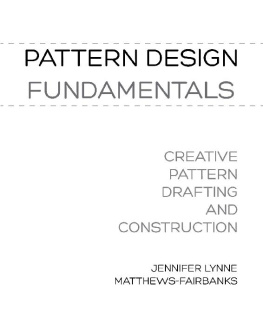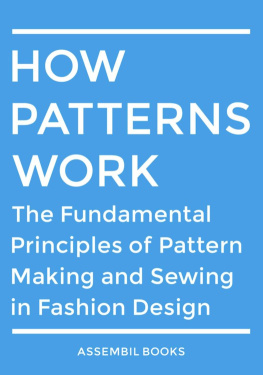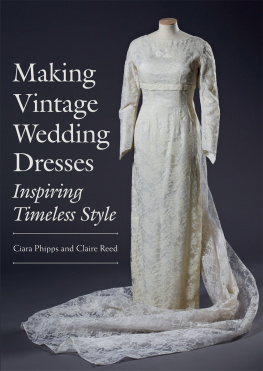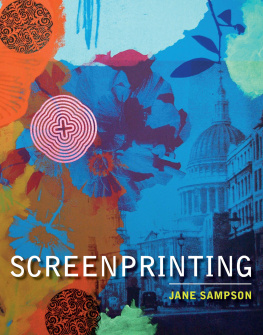Jane Fales - Dress Making - Drafting and Pattern Making
Here you can read online Jane Fales - Dress Making - Drafting and Pattern Making full text of the book (entire story) in english for free. Download pdf and epub, get meaning, cover and reviews about this ebook. year: 2013, publisher: Read Books Ltd., genre: Children. Description of the work, (preface) as well as reviews are available. Best literature library LitArk.com created for fans of good reading and offers a wide selection of genres:
Romance novel
Science fiction
Adventure
Detective
Science
History
Home and family
Prose
Art
Politics
Computer
Non-fiction
Religion
Business
Children
Humor
Choose a favorite category and find really read worthwhile books. Enjoy immersion in the world of imagination, feel the emotions of the characters or learn something new for yourself, make an fascinating discovery.

- Book:Dress Making - Drafting and Pattern Making
- Author:
- Publisher:Read Books Ltd.
- Genre:
- Year:2013
- Rating:5 / 5
- Favourites:Add to favourites
- Your mark:
- 100
- 1
- 2
- 3
- 4
- 5
Dress Making - Drafting and Pattern Making: summary, description and annotation
We offer to read an annotation, description, summary or preface (depends on what the author of the book "Dress Making - Drafting and Pattern Making" wrote himself). If you haven't found the necessary information about the book — write in the comments, we will try to find it.
Dress Making - Drafting and Pattern Making — read online for free the complete book (whole text) full work
Below is the text of the book, divided by pages. System saving the place of the last page read, allows you to conveniently read the book "Dress Making - Drafting and Pattern Making" online for free, without having to search again every time where you left off. Put a bookmark, and you can go to the page where you finished reading at any time.
Font size:
Interval:
Bookmark:
Making-
By
Jane Fales
The drafting system presented here has two marked advantages: the lack of expense connected with its use and the simplicity of its method. Both must be considered in teaching, especially in public schools.
Many systems include a large number of complicated measures and numerous directions, most of which are arbitrary and consequently must be largely a question of memory. In addition, there are various expensive charts, curves, squares, etc., required. In this system few measures are taken, and the attempt is made to show, as far as possible, not only a definite reason for the directions given but their relation to the proportions of the figure for which the pattern is to be made. There is but little memorizing, and all the tools necessary are a square, a tape-measure, drafting-paper, a soft pencil, and a good eraser.
The garments drafted include:
I. Shirt-Waist.
II. Shirt-Waist Sleeve.
III. Foundation Skirt.
IV. Tight-Fitting Waist and Collar.
V. Tight-Fitting Sleeve.
VI. Kimono Waist.
The same general construction lines form the basis for the shirt-waist, tight-fitting-waist, and kimono-waist patterns. As these are intended for foundation patterns from which any desired style may be developed no marked changes in the drafting directions need be made to meet a change in fashion. The construction lines of the skirt pattern are based on the hip measures of the wearer and the width desired at the bottom of the skirt. By changing the second measurethat of the width of the skirtaccording to the demand of fashion the pattern may be given any desired amount of fulness without changing the general method of its construction.
Like all drafting systems and all commercial patterns, this drafting system is not infallible. It will not fit unless the measures are accurately taken and the directions carefully followed, and even with care it may not always suit the unusual figure. Directions for possible changes are included which, it is hoped, will help to solve some difficulties.
The practicability of drafting is sometimes questioned. As a basis for pattern-making and dress-designing, however, it is invaluable to the student. It is seldom used by dressmakers, except to acquire a set of foundation patterns of regular measurements, with good proportions and good lines, from which other patterns of varying measures are made as required. The designers in good dressmaking establishments have usually already acquired so much skill by experience that they do not need more of the preliminary drill which drafting gives. Many students and teachers sew well but they have little opportunity to become skilled through practice in the designing which is the important factor in all good dressmaking. The appreciation for good line and proportion which is given by drafting and the subsequent pattern-making would seldom if ever be acquired by them in using patterns made by others which would require no thought on their part. The ability to make any desired pattern gives an independence which is invaluable and usually arouses greater interest and enthusiasm in the worker than does the use of a ready-made pattern.
For beginners it is always wise to draft to regulation measures first, as it gives practice without any of the complications which may arise when individual measures are used. Regulation measures are given with each draft. All the drafts illustrated in this book are worked out according to regulation measures and, except those for the skirt and kimono waist, to a one-quarter-inch scale. The size of these necessitates the use of a one-eighth-inch scale.
The shirt-waist is generally given as the first problem in drafting because it is simple and because, whether cut from a commercial pattern or a draft, it is most often the first garment made. In making a dress, however, the logical procedure seems to be to cut the skirt first, if both the skirt and the waist are to be made from the same piece of material, as the skirt usually requires uncut lengths while a waist may often be made from pieces. There is no law governing the order of drafting, and, as each draft is a complete problem in itself, the order of procedure may safely be decided by the worker with reference to her dressmaking course as a whole.
Length Measures
(1) Length of back 15
(2) Length of front 15
(3) Length of underarm 7
Width Measures
(1) Width of back 14
(2) Width of chest 14
(3) Bust 38
(4) Waist 26
(5) Neck 13

Individual measures are taken as described in the preceding chapter.
The shirt-waist pattern is composed of two pieces, one half the back and one half the front. These may both be made, side by side, on one sheet of drafting-paper about 36 in length. The back is drafted first.
In the upper left-hand corner of the paper two lines at right angles and of indefinite length should be drawn. The work then proceeds as follows:

(1) To Determine the Foundation Lines:
AB = | Length of back, marked on the vertical line. |
B = | Draw a line at right angles to the line AB to indicate the waist line. |
AC = | of the line AB. Draw a line at right angles to the line AB to indicate the bust line. |
AD = | of the line AC. Draw a line at right angles to the line AB to indicate the width of back line. |
(2) To Determine the Neck Line:
AE = |
|
EF = | above point E, a dotted line drawn at right angles to the line AE. |
AF = | Connect these points with a curve to form the neck line. |
(3) To Determine the Centre Back Line:
BG = | 1 measured in on the waist line B. |
AG = | New centre back line. Connect the points A and G and extend the line indefinitely (about 5). |
On this line mark the points of intersection at point D and point C as D2C2 and use these points in measuring all widths. |
(4) To Determine the Shoulder Line:
D2H = | the width of back. |
HI = | AE, which is |
IJ = | to the right from point I, a dotted line drawn at right angles to the line HI. |
FJ = | Connect these points to form the shoulder line. |
(5) To Determine the Underarm Seam:
C2K = | of the bust measure, minus 1. |
GL = | of the waist measure. |
LM = |
Font size:
Interval:
Bookmark:
Similar books «Dress Making - Drafting and Pattern Making»
Look at similar books to Dress Making - Drafting and Pattern Making. We have selected literature similar in name and meaning in the hope of providing readers with more options to find new, interesting, not yet read works.
Discussion, reviews of the book Dress Making - Drafting and Pattern Making and just readers' own opinions. Leave your comments, write what you think about the work, its meaning or the main characters. Specify what exactly you liked and what you didn't like, and why you think so.










 of the neck measure, marked on the horizontal line from point A.
of the neck measure, marked on the horizontal line from point A.